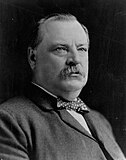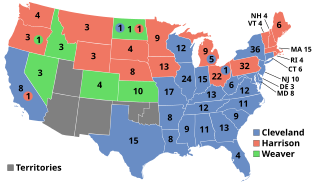
The 1892 United States presidential election was the 27th quadrennial presidential election, held on Tuesday, November 8, 1892. In the fourth rematch in American history, the Democratic nominee, former president Grover Cleveland, defeated the Republican incumbent, President Benjamin Harrison. Cleveland's victory made him the first and, to date, the only person in American history to be elected to a non-consecutive second presidential term. It was also the first of two occasions that incumbents were defeated in consecutive elections—the second being Gerald Ford's loss to Jimmy Carter in 1976, followed by Carter's loss to Ronald Reagan in 1980. To date, it is the only election in which both major party nominees had served as president.
The 1892 Democratic National Convention was held in Chicago, Illinois, from June 21 to 23, 1892. and nominated former President Grover Cleveland, who had been the party's standard-bearer in 1884 and 1888. Adlai Stevenson I of Illinois was nominated for vice president. The ticket was victorious in the general election, defeating the Republican nominees, President Benjamin Harrison and his running mate, Whitelaw Reid.

The 1892 United States presidential election in California was held on November 8, 1892, as part of the 1892 United States presidential election. State voters chose nine representatives, or electors, to the Electoral College, who voted for president and vice president.

After losing re-election to Republican Benjamin Harrison in 1888 and leaving office in 1889, U.S. President Grover Cleveland was initially satisfied with his return to private life. However, Cleveland's views about his retirement began to change at the time of the 1890 midterm elections, in which the Democrats won huge victories at the ballot box. In addition, Cleveland disliked what he perceived to be the frequent blunders of the Harrison administration. By the time 1891 ended, Grover Cleveland decided to re-enter American political life and run again for U.S. president in the 1892 U.S. presidential election.
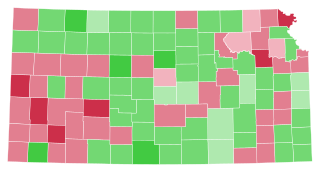
The 1892 United States presidential election in Kansas took place on November 8, 1892. All contemporary 44 states were part of the 1892 United States presidential election. Kansas voters chose ten electors to the Electoral College, which selected the president and vice president.

The 1892 United States presidential election in South Carolina took place on November 8, 1892, as part of the 1892 United States presidential election. Voters chose 9 representatives, or electors to the Electoral College, who voted for president and vice president.

The 1892 United States presidential election in Wyoming took place on November 8, 1892, as part of the 1892 United States presidential election. State voters chose three representatives, or electors, to the Electoral College, who voted for president and vice president.

The 1892 United States presidential election in Georgia took place on November 8, 1892, as part of the wider United States presidential election. Voters chose 13 representatives, or electors, to the Electoral College, who voted for president and vice president.

The 1892 United States presidential election in Idaho took place on November 8, 1892. All contemporary 44 states were part of the 1892 United States presidential election. State voters chose three electors to the Electoral College, which selected the president and vice president.

The 1892 United States presidential election in North Dakota took place on November 8, 1892. As North Dakota had been admitted to the Union as the 39th state on November 2, 1889, this was the first presidential election in which North Dakota cast electoral votes. All contemporary 44 states were part of the 1892 United States presidential election. Voters chose three electors to the Electoral College, which selected the president and vice president.

The 1892 United States presidential election in Colorado took place on November 8, 1892. All contemporary 44 states were part of the 1892 United States presidential election. Colorado voters chose four electors to the Electoral College, which selected the president and vice president.

The 1892 United States presidential election in Oregon took place on November 8, 1892. All contemporary 44 states were part of the 1892 United States presidential election. State voters chose four electors to the Electoral College, which selected the president and vice president.

The 1892 United States presidential election in South Dakota took place on November 8, 1892. All contemporary 44 states were part of the 1892 United States presidential election. Voters chose four electors to the Electoral College, which selected the president and vice president. South Dakota participated in its first ever presidential election, having been admitted as the 40th state on November 2, 1889.
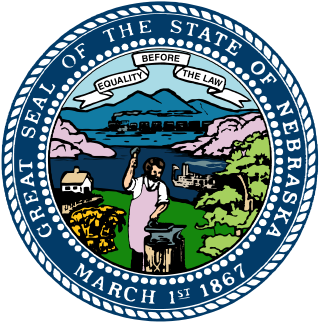
The 1892 United States presidential election in Nebraska took place on November 8, 1892. All contemporary 44 states were part of the 1892 United States presidential election. Voters chose eight electors to the Electoral College, which selected the president and vice president.

The 1892 United States presidential election in Minnesota took place on November 8, 1892. All contemporary 44 states were part of the 1892 United States presidential election. Minnesota voters chose nine electors to the Electoral College, which selected the president and vice president.

The 1892 United States presidential election in Alabama took place on November 8, 1892. All contemporary 44 states were part of the 1892 United States presidential election. Alabama voters chose eleven electors to the Electoral College, which selected the president and vice president.

The 1892 United States presidential election in Arkansas took place on November 8, 1892. All contemporary 44 states were part of the 1892 United States presidential election. Arkansas voters chose eight electors to the Electoral College, which selected the president and vice president.

The 1892 United States presidential election in Kentucky took place on November 8, 1892. All contemporary 44 states were part of the 1892 United States presidential election. Kentucky voters chose thirteen electors to the Electoral College, which selected the president and vice president.
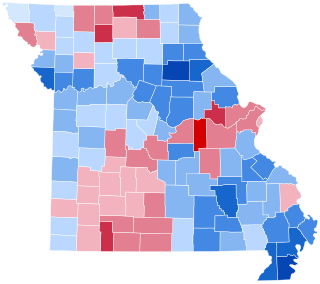
The 1892 United States presidential election in Missouri took place on November 8, 1892. All contemporary 44 states were part of the 1892 United States presidential election. Voters chose 17 electors to the Electoral College, which selected the president and vice president.

The 1892 United States presidential election in Tennessee took place on November 8, 1892. All contemporary 44 states were part of the 1892 United States presidential election. Tennessee voters chose twelve electors to the Electoral College, which selected the president and vice president.




